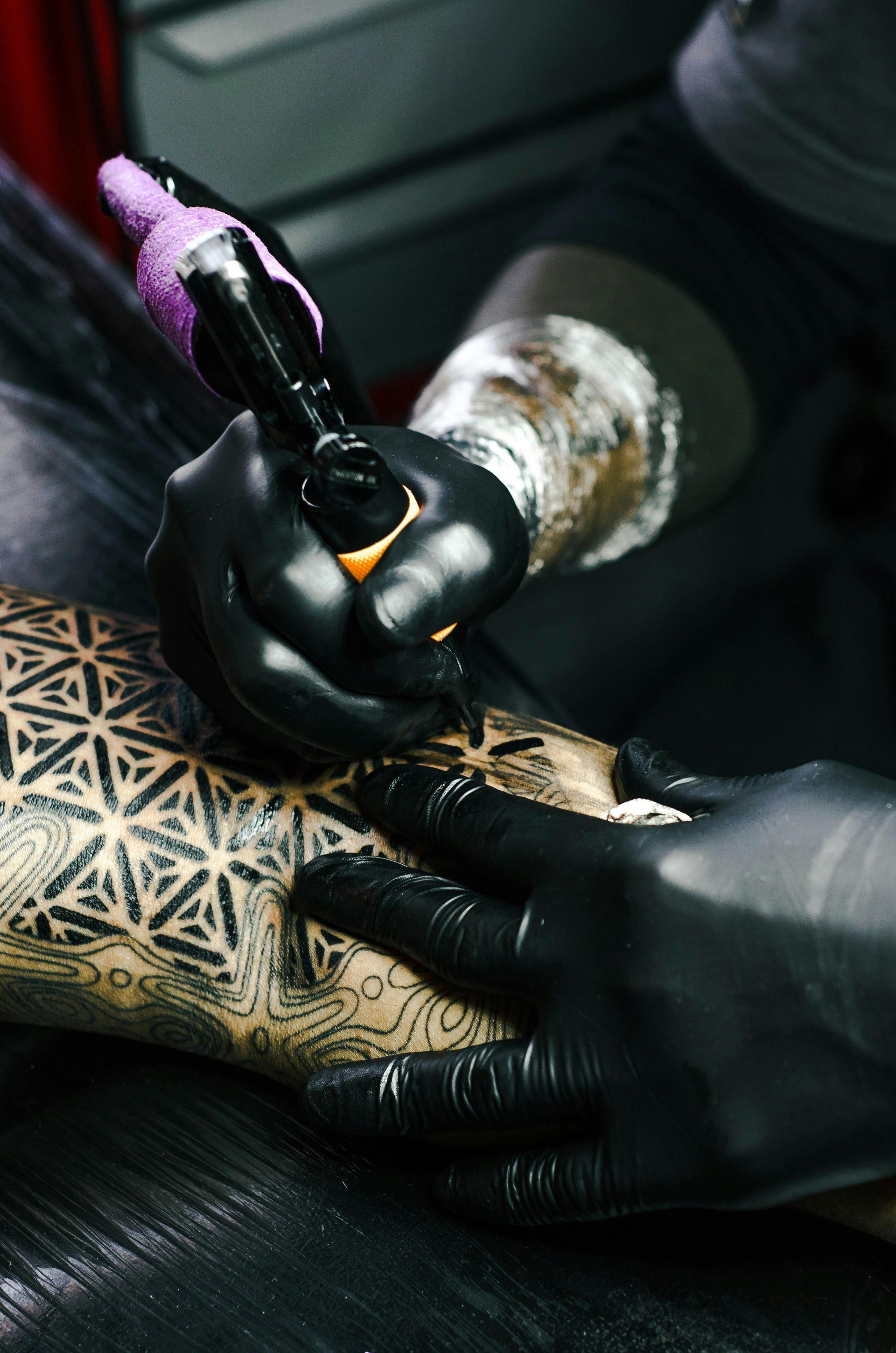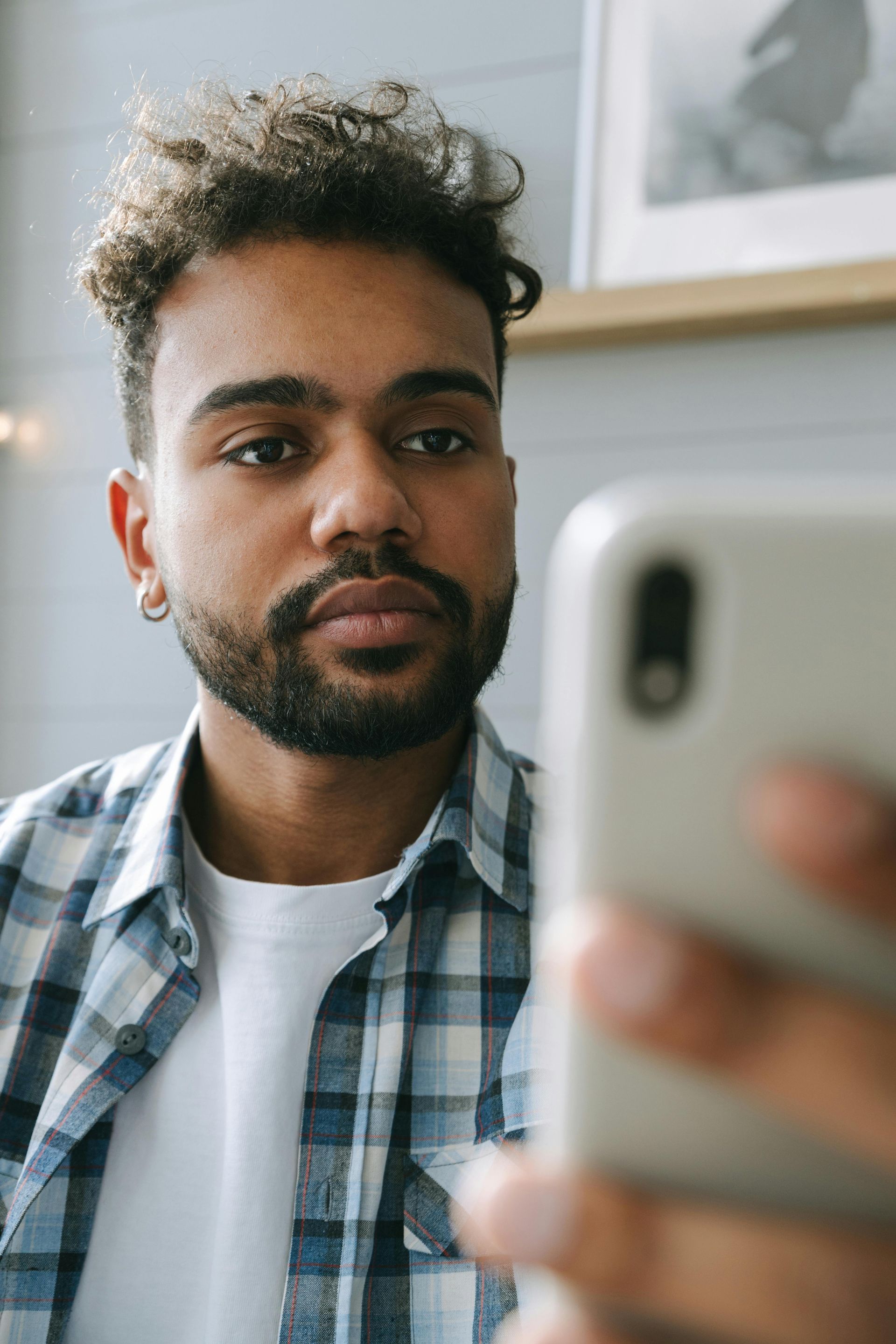Raising Awareness About Sex Trafficking Tattoos In Your Community🦋
In the trafficking world, it's all about power and control. Sex trafficking tattoos are one way that traffickers stake their claim and control their victims. By permanently marking their victims with their name, images of dollar signs, or other various designs, they assert their power and claim what they establish as their own.
Studies have shown that around half of trafficking survivors in the United States display these tattoos on their bodies. This rise in sex trafficking tattoos explains why your local Michigan community needs to promote education around spotting the red flags of human trafficking. Keep reading to learn more about the signs and how to support victims.
Key Takeaways
- Sex traffickers often choose tattoos with symbols like barcodes, dollar signs, crowns, and even their name to display ownership and control over their victims. These are usually visible on the neck, arms, or above the groin.
- Many trafficking tattoos are poorly drawn and may be repeated across more than one victim within a group. Gang members sometimes use faces or hearts along with a date.
- Knowing how to identify these tattoos helps community members catch onto signs of human trafficking. Tattoo artists should look for burns around older tattoos or cover-ups that may hide branding marks.
- Community education and training can raise awareness and help save victims. Distributing flyers with phone numbers to trafficking hotlines to tattoo shops can offer immediate opportunity for victims to escape.
- Tattoo artists play a key role in communicating with their clients about safety during tattoo appointments.
Understanding Sex Trafficking Tattoos
Being able to recognize sex trafficking tattoos is crucial to catching the warning signs of this crime. By identifying these skin markings, you can help potential victims protect their human rights within your community.
Common symbols and markings used by traffickers
Barcodes, numbers, and currency symbols like money bags are all common tattoos found on victims of sex trafficking. In Europe, you often see tattoos with bar codes and numbers that represent the money a victim must earn before release.
In the United States, traffickers will usually use tattoo their name or nickname to dictate ownership over victims of trafficking. Crowns marked with initials or dollar sign tattoos represent a victim’s value in the sex trade.
Gang members may have tattoos of faces or hearts combined with a date to recognize a significant event. These may be visible in areas like the face, neck, hands, or near private areas for advertising.
Branding marks on victims are usually poorly executed. You may see the same tattoo on others within the same group...this is a clear red flag if you're working in a public health setting, for example, an emergency department.
“Traffickers frequently tattoo their name or gang symbol onto their victims as a cruel form of ownership,” says Survivor’s Ink founder Jennifer Kempton.
The significance of tattoos in exerting control over victims
Sex trafficking tattoos can bring up a deep emotional pain as well as fear in the victim’s mind every time they look at them, even after escape. Gina Jernukian of Soul Survivor Ink has observed that these brand marks create deep psychological tactics, making it much more difficult for a victim to run away or rebel against a trafficker.
In some cases, human trafficking victims will get tattoos willingly in order to gain a sense of belonging or respect. Tattoo artists may notice burns or skin injuries around older tattoos...these may be signs of past cover-ups meant to hide the original tattoo from traffickers.
Being able to recognize these signs can assist medical professionals, social service providers, and community partners in providing essential intervention as quickly as possible.
How to Recognize and Respond to Sex Trafficking Tattoos
Tattoos of human trafficking usually include names or symbols that indicate ownership. Reach out immediately to local law enforment if you identify any tattoos signaling sexual abuse or coercion.
Identifying red flags in your community
Being able to identify warning signs requires knowing where traffickers typically place branding tattoos. Human sex trafficking victims usually apply tattoos in areas like the neck, arms, or above the groin.
Symbols may appear in the form of crowns, barcodes, or even a trafficker’s name written on the victim’s skin. These signs are meant to signal control from human traffickers.
Context also matters. Young adults with lots of tattoos that look similar to trafficking designs could be at higher risk for being exploited. Not every symbol means someone is a victim of trafficking, (motorcycle gangs may also display similar tattoos), but noticing new or unusual tattoos can help raise awareness of human trafficking and tattoo recognition in your local Michigan community.
If you suspect someone is being trafficked based on tattoos or other warning signs like physical injuries or lack of eye contact, reach out for more information from trusted organizations like Survivor’s Ink or Fresh Start.
The Role of Community Education in Prevention
Community and human trafficking awareness campaigns are valuable and educate children and adults to recognize the signs of trafficking tattoos.
Raising awareness through outreach and training
Getting the community involved in outreach and training can help combat sex trafficking. Displaying materials like posters and flyers with hotline numbers in tattoo shops, especially in restrooms, offers a safe and discreet way for victims to contact the National Human Trafficking Hotline and escape.
Educating your peers about tattoos and their link to trafficking can help more people identify red flags. Take time to educate and empower your friends, family, and colleagues with this essential knowledge so that they can become allies in the fight against human trafficking.
Engaging tattoo artists as frontline allies
Tattoo artists play an important part in identifying potential victims of human trafficking. Building a relationship with their clients can help the artist assess their client's situation more easily. If they suspect any signs of trafficking, they should question them about their living situation during appointments.
These conversations can bring up red flags, as well as identification of skin signs with alternative meanings, and offer those in vulnerable populations a path to freedom. Tattoo artists that encourage awareness are frontline allies that offer hope for sex trafficking survivors and victims in local communities.
Conclusion
Raising awareness about the hidden signs of sex trafficking tattoos is vital for safety within your community. You can play an active role in spotting warning signs and identifying these tattoos by educating yourself and others on what to look for.
Connecting survivors with local organizations in Pontiac, Michigan, like Hope Against Trafficking, can also help victims integrate back into society. With local community participation and education, we can begin to combat human trafficking and give victims an opportunity for a second chance.
FAQs
1. What are sex trafficking tattoos and how do they relate to human-trafficking survivors?
Sex trafficking tattoos are often branded on victims of labor trafficking or sex trafficking as a form of control or ownership. These help identify individuals who have survived circumstances like abuse.
2. Why is raising awareness about these tattoos important in Michigan?
Knowing what type of tattoos to look for can help identify victims more quickly and curb abuse. This also helps medical students, social workers, and others on the front lines recognize trafficking victims so they can notify local authorities and evaluate the mental health of their patients.
3. How does Survivor's Ink help victims with sex trafficking tattoos?
Survivor's Ink can remove or cover up ownership tattoos for human-trafficking survivors. This allows victims to regain dignity as well as helps them recovef from past trauma related to their experiences.
4. Are there any conflicts when identifying or treating victims with these specific skin signs?
Conflicts may arise if identification results in judgement or privacy concerns for survivors. Healthcare professionals should take care that victims feel safe and respected when considering treatment decisions.







